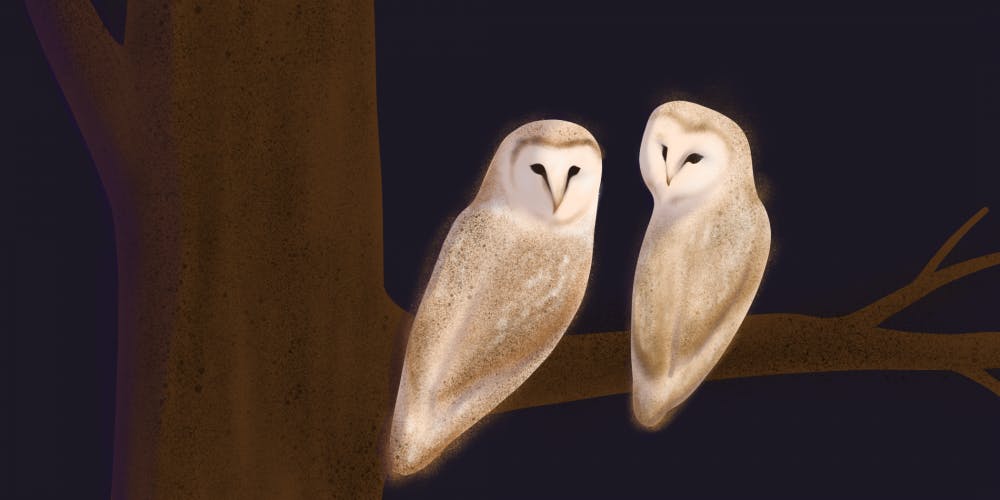According to Greek mythology, owls are the symbol of wisdom, as they sat on goddess Athena’s blindside and guided her in seeing the whole truth. This weekend, the public can have the opportunity to hear and see that creature of wisdom at the Owl Prowl at Burr Oak State Park on Saturday.
Julie Gee, a naturalist at Burr Oak, said the Owl Prowl will consist of an educational slideshow about the common owls in Ohio and their adaptations for surviving at night. She will then guide the group on a trail and call the screech and barred owls with the hopes that they will call back and potentially come closer.
“Sometimes you’re lucky, and sometimes you’re not,” Gee said.
Gee said the most common owl in Ohio is the screech owl. It’s about the size of a robin and has tufts of feathers on its head that are commonly mistaken for ears. Gee explained that owls do not have visible ears, but rather ears on the side of their face covered by feathers.
“What’s really interesting about it is that it comes in two color phases,” Gee said. “It comes in a red phase and a gray phase.”
The red phase, and Gee explained, is commonly seen in southeastern Ohio, while the gray is most commonly seen in northern Ohio. Gee also made note that the screech owl does live in the area, but is not commonly spotted on the Owl Prowl.
The other common owl in Ohio is the barred owl. Unlike the screech owl, the barred owl is about 22 inches in height when perched and is grayish/brownish in color.
“It’s unique because it has black eyes,” Gee said.
Gee said most owls have yellow eyes, so the black eyes of the barred owl set it apart from the rest. The barred owl loves to live in mature forests and forested ravines, and that is why it can be found on the Owl Prowl at Burr Oak.
Gee said that it is the most common owl to respond when it is called to. It makes a variety of sounds including hawks, cackles and laughs. If two or more of them are calling to each other, it sounds like monkeys laughing.
“It’s so crazy, the sounds that they can make,” Gee said.
Gee said the owls respond to the calls made to them because they are territorial and are trying to protect their ground.
Casee Ontko, a junior studying creative writing, wasn’t aware of the owl spotting event happening nearby. However, she found it to be an interesting event.
“I know I would be interested in it, and my roommate would be too,” Ontko said. “We’re just into that stuff.”
Karen Mammone, a senior lecturer of biological sciences at Ohio University, has visited the Owl Prowl in the past and enjoyed every experience there.
“The first time I went, it was just amazing,” Mammone said.
Mammone said the owls normally don’t migrate in winter and actually are in their mating season at the time of the Owl Prowl, so they are especially protective when hearing the calls. Mammone also said the owls would get closer and closer when the naturalist would make their call until they were perched right above the group.
“Normally you’d walk right by them and never know that anything was there,” Mammone said. “I think it’s a good reminder of all the things that are out there that are never seen and that we all don’t think about and we need to think about more often.”






